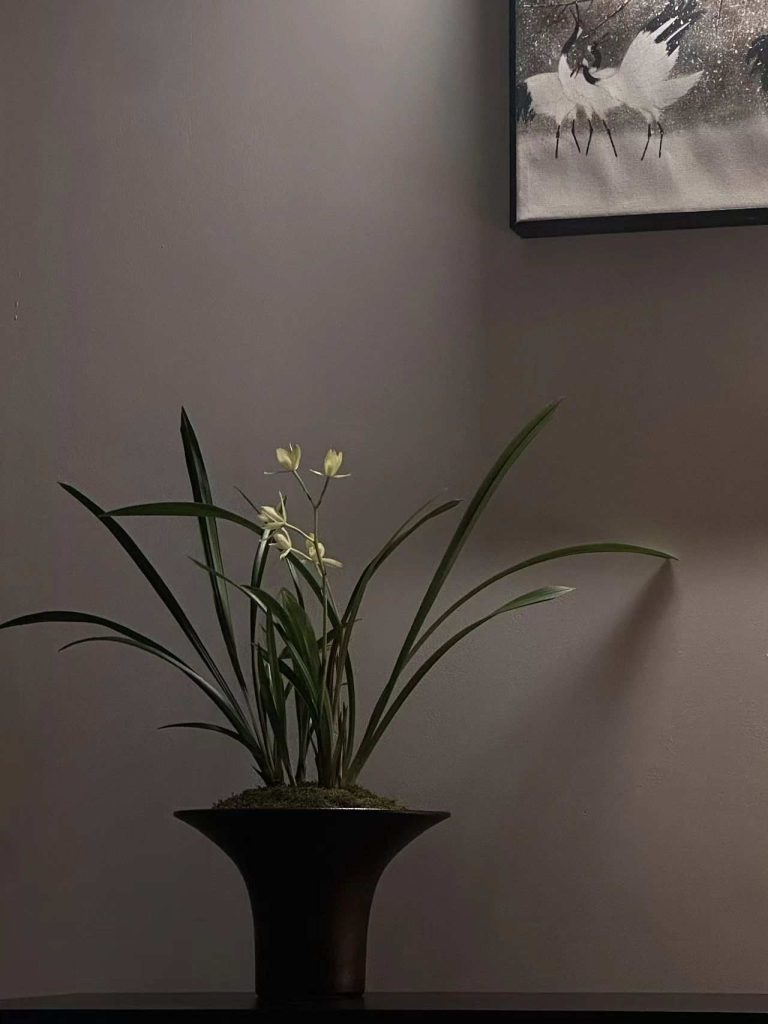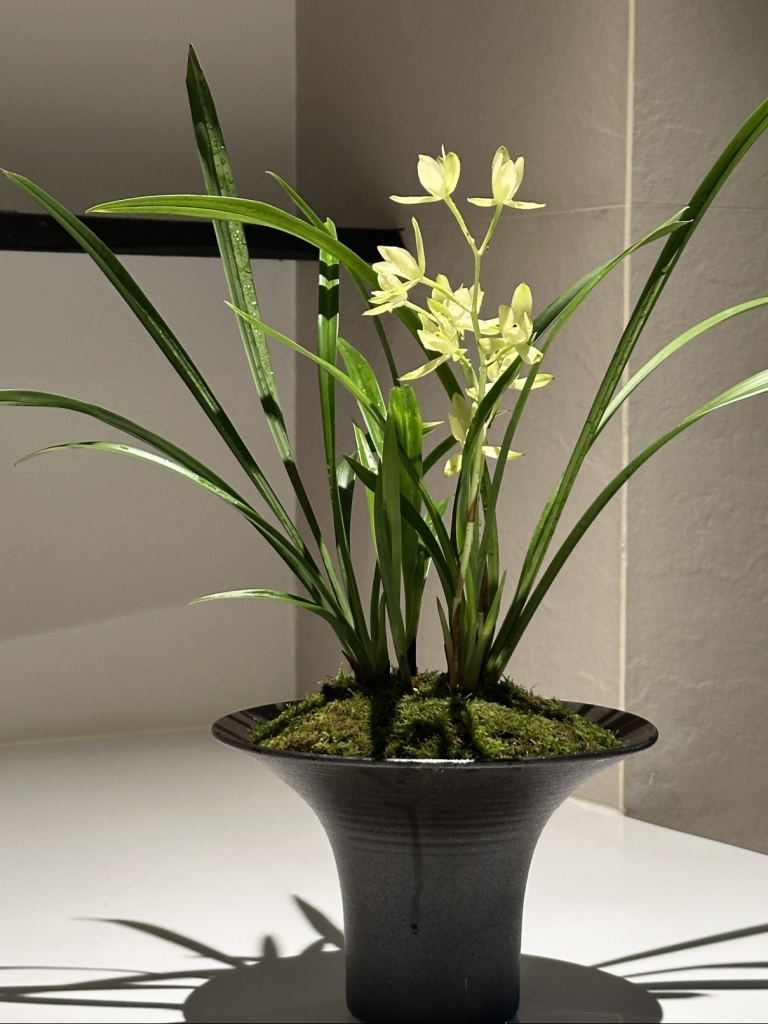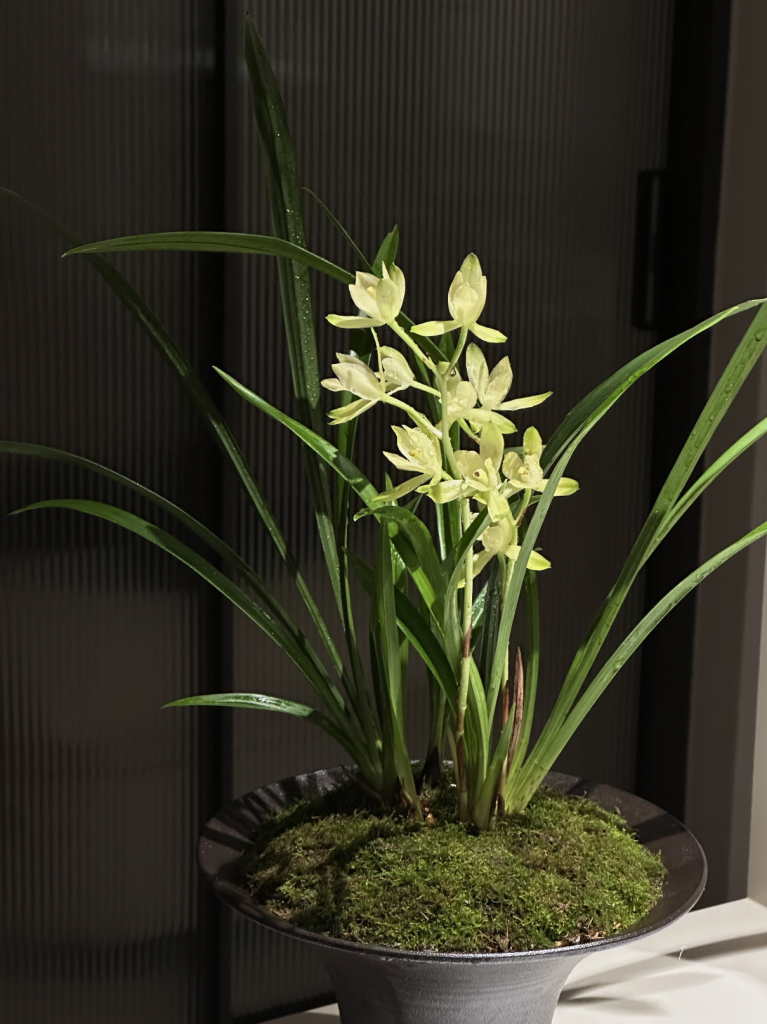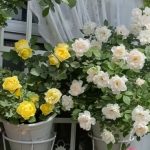How to Care for an Orchid: A Step-by-Step Guide for Beginners
Welcome to the fascinating world of orchids! If you’re new to orchid care, don’t be intimidated. This guide breaks down everything you need to know. Unlike common houseplants, orchids are epiphytes, meaning they naturally grow on trees or rocks. Their roots need air and excellent drainage. You can’t treat them like a pothos! Let’s dive into the essentials of growing orchids.
I. Understanding Orchid Habits & Needs
Orchids are epiphytic plants, native to tree trunks or rock crevices. Their roots require air circulation and are prone to rot if suffocated or waterlogged. They thrive in warm, humid, and well-ventilated environments. Proper orchid care starts with understanding this.
II. The Perfect Potting Mix: It’s All About Aeration!
The key principle for your orchid potting mix is: Aeration! Aeration! Aeration!

- Recommended Materials:
- Pine Bark Chips (0.5-2cm size; boil before use to sterilize)
- Sphagnum Moss (Excellent water retention, ideal for dry climates)
- Clay Pebbles / Lava Rock (Perfect for drainage at the pot’s bottom)
- Coconut Husk Chips / Charcoal Chunks (Help regulate moisture and prevent rot)
- Common Beginner Mistakes:
- Using garden soil, regular potting mix, or pure sphagnum moss long-term (this suffocates roots!).
- Sample Mix (Universal Phalaenopsis Recipe):
- Pine Bark (70%) + Sphagnum Moss (20%) + Charcoal Chunks (10%)
III. Light Requirements for Healthy Orchids
Providing the right light is crucial for orchid care.
- Ideal Spot: East or North-facing windowsill, or behind a sheer curtain.
- Reading the Leaves:
- Healthy: Bright green with a slight sheen.
- Too Much Light: Yellowish leaves or sunburn spots.
- Not Enough Light: Dark green, elongated leaves, and no flowers.
- Seasonal Adjustments:
- Summer: Provide 70% shading.
- Winter: Full sun (avoid harsh midday rays).

IV. Getting the Temperature Right
Most orchids prefer: 18-28°C (65-82°F) daytime / 15-20°C (59-68°F) nighttime.
- Triggering Blooms:
- Cymbidiums: Need 4-6 weeks of cool 5-10°C (41-50°F) temperatures.
- Phalaenopsis: Require a distinct day-night温差 of around 15°C.
- Critical Warning: Keep orchids away from air conditioner vents or radiators.
V. Watering: The Core of Orchid Care
Mastering watering is the most important part of orchid care for beginners.
- The Golden Rule: Water thoroughly, then allow the medium to dry almost completely before watering again. Check by poking a finger 2cm into the mix.
- When in Doubt: It’s safer to be under-watered than over-watered. Soggy roots lead to rot!
- Water Quality: Rainwater > boiled cooled water > tap water (let sit for 24 hours).
- Watering Techniques:
- Summer: Water in the early morning, every 3-5 days (bark dries quickly).
- Winter: Water around midday, every 7-10 days.
- Increasing Humidity: Place pot on a pebble tray with water (ensure pot base isn’t submerged).
VI. Pruning and Maintenance
Proper pruning encourages reblooming and plant health.
- After Flowers Fade: Cut the flower spike, leaving 2-3 nodes; it may rebloom.
- Yellow/Brown Leaves: Cut at the base to prevent disease.
- Rotting Roots: Cut away black/mushy roots → soak in fungicide → let air dry for 24 hours.
VII. Pest and Disease Management
| Problem | Signs | Solution |
|---|---|---|
| Anthracnose | Black spots with yellow halos on leaves | Remove affected leaves + spray with Mancozeb |
| Soft Rot | Black, smelly mush at leaf base | Scoop out rot + stop watering for 1 week |
| Spider Mites | Fine webbing, tiny red dots under leaves | Wipe with alcohol + spray neem oil solution |
| Scale | Small, hard, bumpy insects on leaves | Scrape off with toothpick + apply neem oil |
- Prevention Tips:
- Quarantine new orchids for 2 weeks.
- Spray monthly with a diluted garlic water solution (1 part garlic juice:20 parts water).

VIII. Reading Your Orchid’s Leaves
Your orchid’s leaves tell you exactly what it needs.
| Leaf Condition | Likely Cause |
|---|---|
| Wrinkled, Limp | Under-watered / Root Rot |
| Brown Leaf Tips | Fertilizer Burn / Low Humidity |
| Reddish New Growth | Too Much Light |
| Elongated, Floppy | Insufficient Light / Too Much Nitrogen |
- Species-Specific Traits:
- Cymbidium: Wide, thick, leathery leaves.
- Oncidium: Long, thin, folded leaves.
- Cattleya: Thick, fleshy pseudobulbs.
Beginner’s Cheat Sheet: Key Orchid Care Takeaways
- Choose Breathable Pots: Terracotta/plastic pots with holes are better than glazed ceramic.
- Fertilize Lightly: Use a specialized orchid fertilizer at 1/4 strength, only after flowering.
- Repot Every 2 Years: Refresh the mix when the bark breaks down and loses aeration.
- The Flowering Secret: Temperature variation + controlled watering + a little neglect (Don’t baby them too much!).
The Final Word: Your Orchid Care Mantra
“Let the roots breathe, keep the leaves bright. Water only when dry, don’t water in fright. Give them breeze, filtered light, and a cool night. Your orchids will reward you with blooms, a beautiful sight!”

 Practical Peony Care Guide 2025
Practical Peony Care Guide 2025  Tulip Summer Care Guide: Keep Blooms Alive in Heat! (Cooling Tips & Pest Prevention)
Tulip Summer Care Guide: Keep Blooms Alive in Heat! (Cooling Tips & Pest Prevention)  Ultimate Dracaena Care Guide: Grow Your Dragon Tree Like a Pro!
Ultimate Dracaena Care Guide: Grow Your Dragon Tree Like a Pro!  Ultimate Rose Care Guide: How to Grow Healthy & Blooming Roses
Ultimate Rose Care Guide: How to Grow Healthy & Blooming Roses 